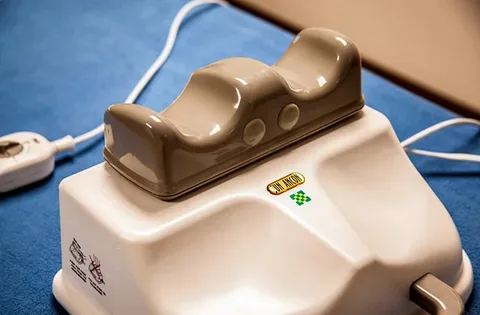A root canal is a common dental treatment used to save a tooth that is badly decayed or infected. When the inside of a tooth, called the pulp, becomes damaged, a root canal may be the only way to repair and protect the tooth. This procedure is safe, effective, and helps prevent the need for tooth removal.
In this article, we will explain what a root canal is, when it is needed, how it is done, and what to expect before and after the procedure. This guide is written in simple terms to help anyone understand the basics of root canal treatment.
What is a Root Canal?
A root canal is a dental procedure that involves removing the damaged or infected pulp from the inside of a tooth. The pulp is a soft tissue found in the center of the tooth. It contains nerves and blood vessels that help the tooth grow when you are young.
Once the tooth is fully grown, it no longer needs the pulp to stay healthy. If the pulp becomes infected or inflamed due to deep decay, cracks, or injury, it can cause pain and lead to more serious problems. A root canal helps fix this by removing the pulp and cleaning the inside of the tooth.
Why is a Root Canal Needed?
There are several reasons why a root canal may be needed. The most common reasons include:
-
Deep tooth decay: When a cavity goes untreated for too long, it can reach the pulp and cause infection.
-
Repeated dental procedures: Having multiple fillings or other work on the same tooth can cause damage to the pulp.
-
Cracks or chips: A broken or cracked tooth can expose the pulp to bacteria.
-
Injury to the tooth: Even if there is no visible damage, an injury can still harm the pulp inside.
If these issues are not treated, the infection can spread to the gums and bone, leading to abscesses or tooth loss.
Signs You May Need a Root Canal
Some symptoms may suggest that a root canal is needed. These signs include:
-
Severe tooth pain when chewing or applying pressure
-
Long-lasting sensitivity to hot or cold foods and drinks
-
Swelling or tenderness in nearby gums
-
Darkening of the tooth
-
A pimple or bump on the gums that does not go away
However, in some cases, there may be no symptoms. That’s why regular dental checkups are important to catch problems early.
How is a Root Canal Done?
A root canal is usually done in one or two visits to the dentist. Here’s what generally happens during the procedure:
-
Numbing the tooth: The dentist gives you a local anesthetic to make sure the area is numb. This means you won’t feel any pain during the procedure.
-
Making an opening: A small hole is made in the top of the tooth to reach the pulp inside.
-
Removing the pulp: The damaged or infected pulp is carefully removed using special tools.
-
Cleaning the root canals: The inside of the tooth is cleaned and shaped to remove all bacteria and debris.
-
Filling the space: The empty root canals are filled with a rubber-like material to seal them and prevent future infection.
-
Sealing the tooth: A temporary or permanent filling is placed on top of the tooth. In many cases, a crown is added later to protect the tooth and restore its shape.
The entire process can take between 30 minutes to 90 minutes, depending on how complex the tooth is.
What to Expect After a Root Canal
After the procedure, it is normal to feel some soreness or mild discomfort for a few days. This can usually be managed with over-the-counter pain medicine. Your dentist may also prescribe antibiotics if there was an infection.
You should avoid chewing on the treated tooth until it is fully restored, especially if you are waiting for a crown. Good brushing and flossing habits, along with regular checkups, will help your root canal-treated tooth last a long time.
Benefits of Root Canal Treatment
Root canal treatment offers many benefits, including:
-
Relief from pain: The procedure removes the source of pain and infection.
-
Tooth preservation: It allows you to keep your natural tooth, which is better than replacing it with an artificial one.
-
Improved oral health: Treating an infected tooth helps prevent the spread of infection to other areas.
-
Better chewing ability: A restored tooth works just like a healthy one, so you can eat normally.
Myths and Facts About Root Canals
Many people are afraid of root canals because of old stories or misinformation. Let’s clear up some common myths:
-
Myth: Root canals are very painful.
Fact: Thanks to modern methods and numbing medicine, most patients say the procedure is no more painful than getting a filling. -
Myth: Removing the tooth is better.
Fact: Saving your natural tooth with a root canal is usually better for your long-term dental health. -
Myth: Root canal-treated teeth always fail.
Fact: With proper care, a treated tooth can last a lifetime.
How to Avoid the Need for a Root Canal
Preventing the need for a root canal is possible with good oral care. Here are some tips:
-
Brush your teeth twice a day with fluoride toothpaste
-
Floss daily to remove food and plaque from between teeth
-
Avoid sugary snacks and drinks that can lead to decay
-
See your dentist regularly for cleanings and checkups
-
Get cavities treated early before they get worse
Conclusion
A root canal is a simple and effective way to save a tooth that is infected or damaged. It helps relieve pain, protects your other teeth, and allows you to keep your natural smile. Although the idea of a root canal may sound scary, it is a safe and common procedure done by dentists every day. With the right care, your treated tooth can last for many years and stay healthy and strong.











































